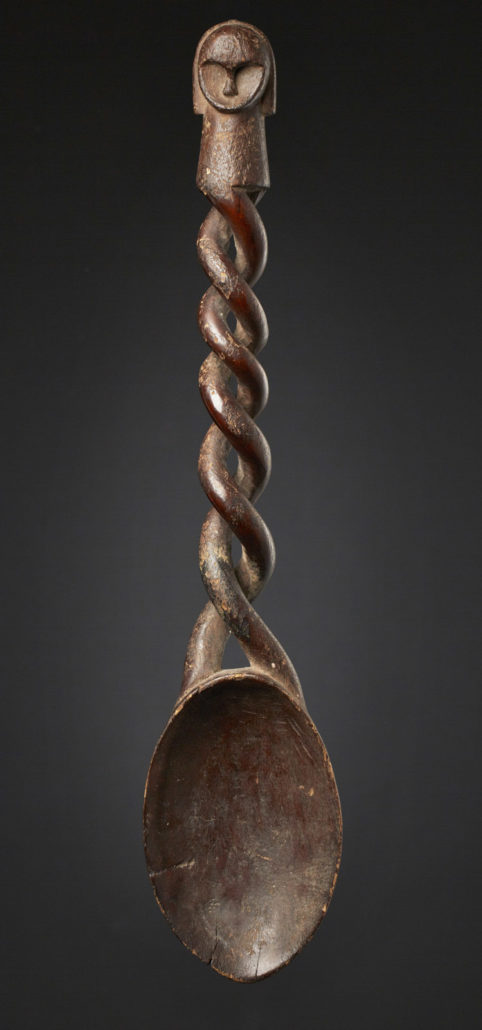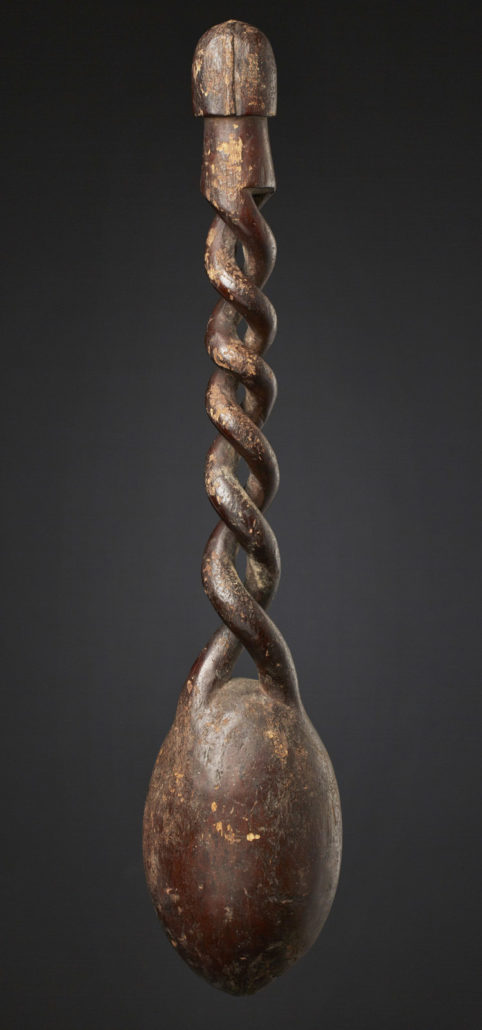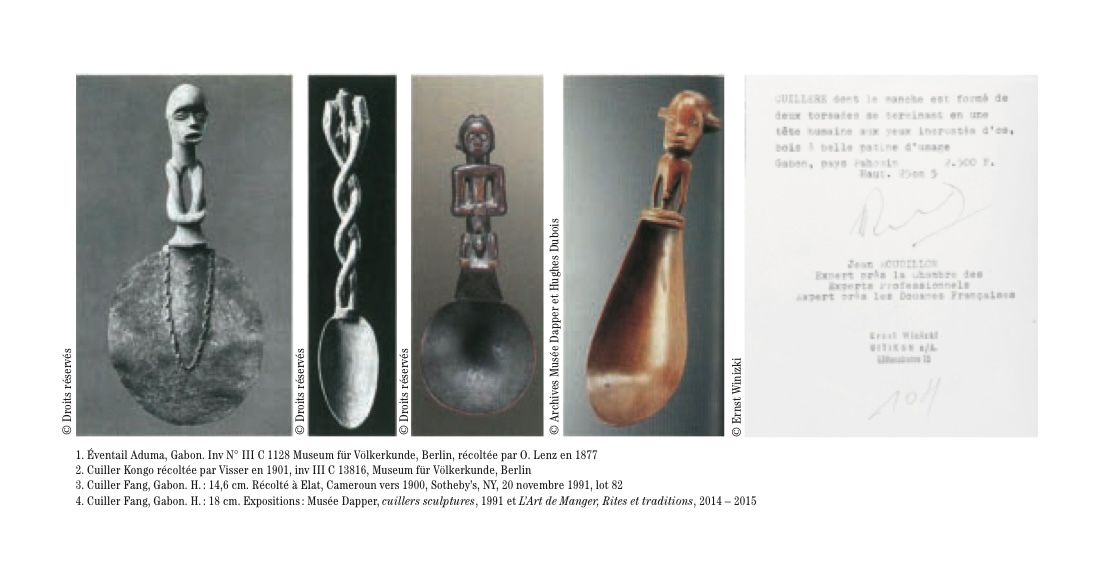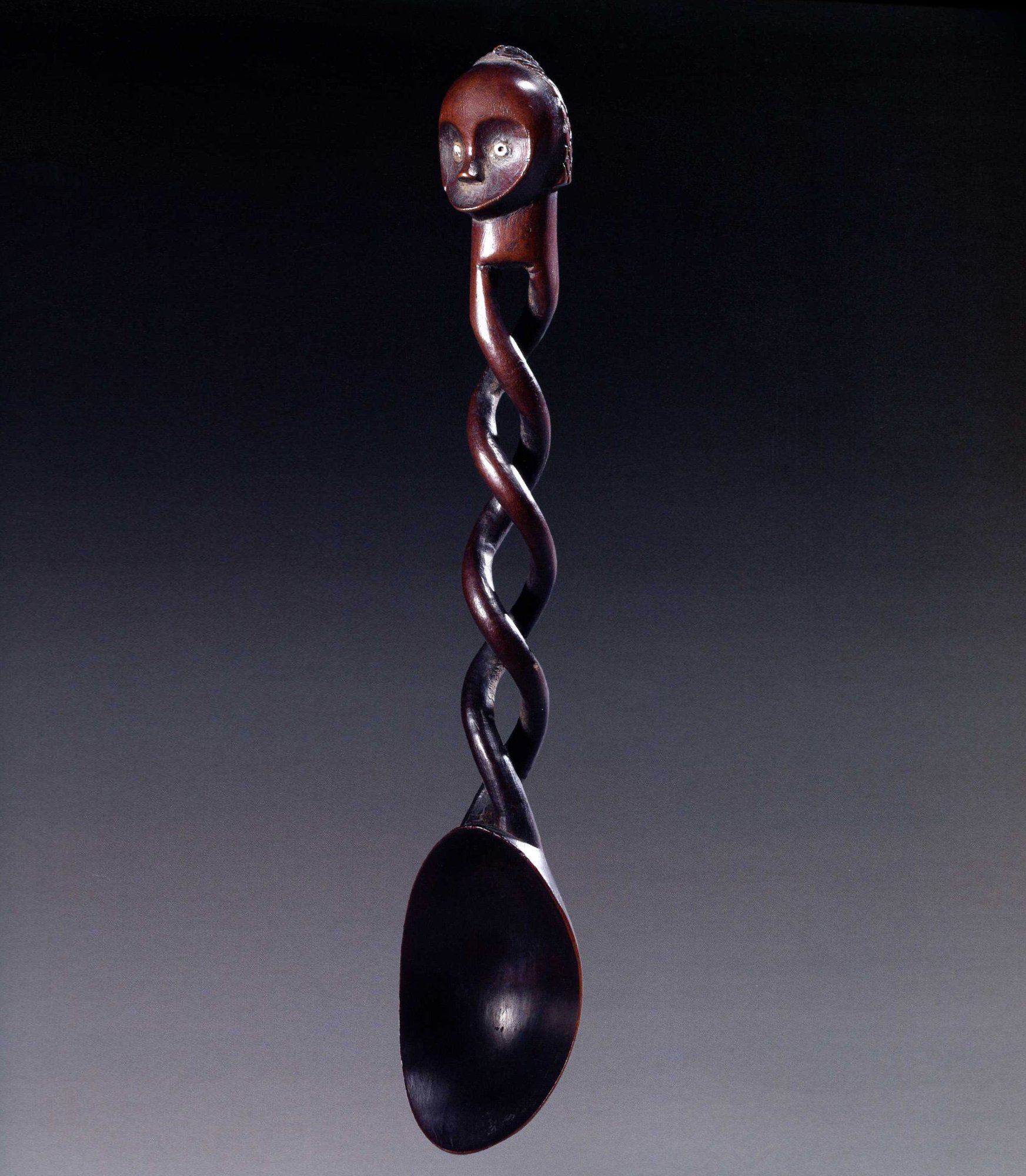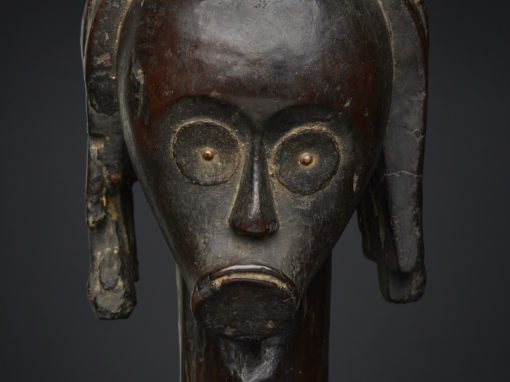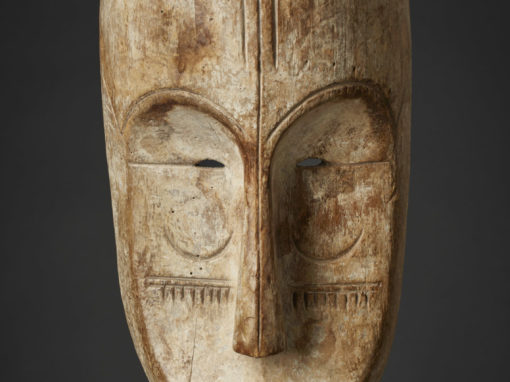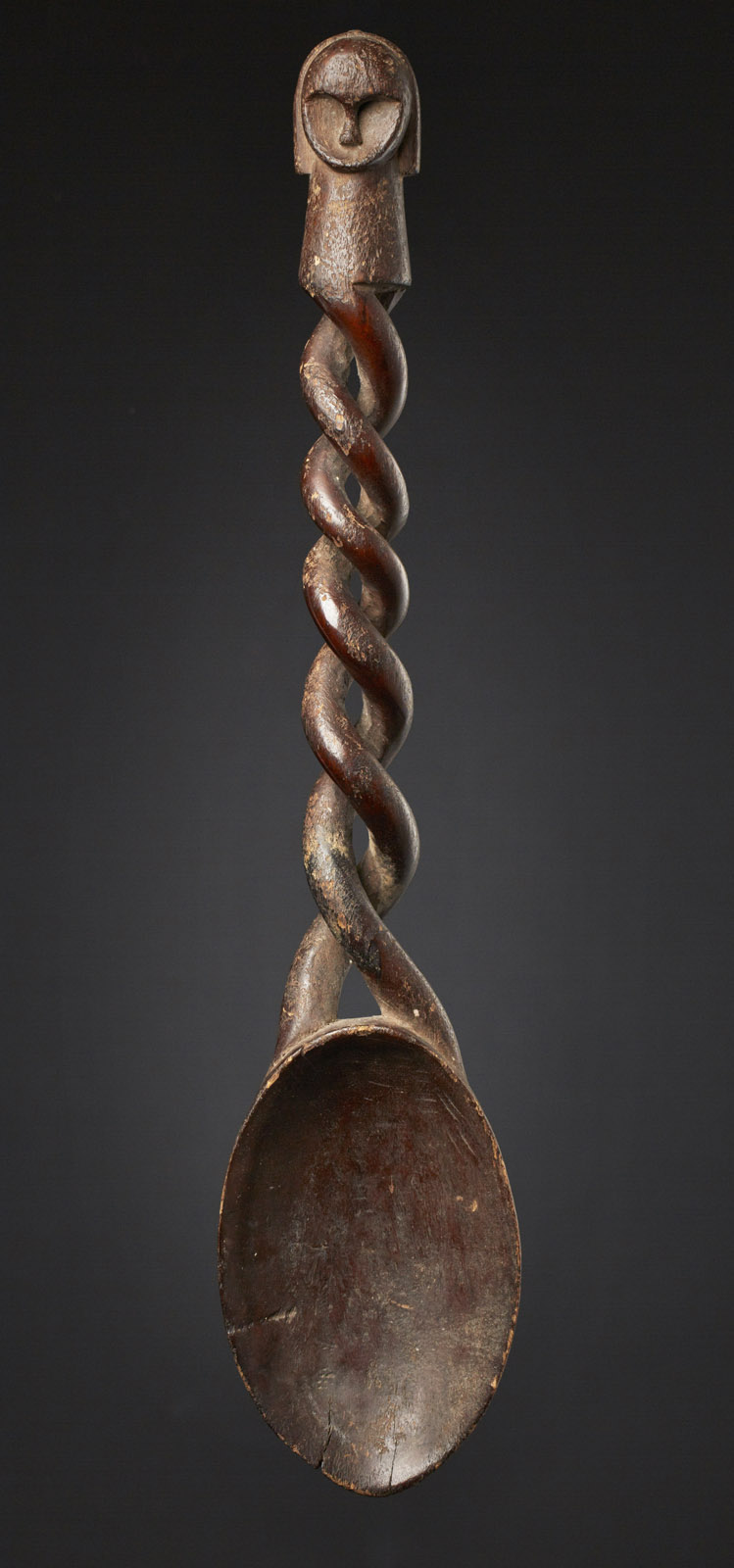
Cuiller fang, Fang Spoon, cuiller de fang cérémonial, Fang Löffel
origin: equatorial forrest, africa
region: Gabon (Gabun)
age : XX century
object: cuiller de fang cérémonial (ceremonial spoon fang origin)
size: hight 50,0 cm (19,68 inch), ladle 10,5 x 16,3 cm (4,13 x 6,41 inch) Double helix (wide) between 3,7-4,0 cm (1,4 x 1,57 inch)
material: wood,
A ceremonial FANG SPOON, originated in gabon with a handle that contains a very elegantly carved double twist that features a characteristic „Fang“ style head with a hollowed-out, heart shaped face (without eyes), that contains a domed forehead with a hairstyle that reminds of a traditional fang “Nlo-o-ngo” cap worn by female / male fang.
The spoon shows old patina and use.
Fang spoons that feature figurative decoration are extremely rare, and images are limited to complete figures (male or female) and heads. As a reference often quoted is the famous spoon from the Berlin Museum with a human figure as a handle collected in the Ogowe by Frekmann in 1883 (Cf. Kurt Krieger, Westafrikanische Plastik III, Museum für Völkerkunde, 1969, plate 129).
The double helix of the handle of this Fang spoon from “a private collection, Frankfurt” is not characteristic of the Fang minor arts.
It is nevertheless found on the anthropomorphic handle of an Aduma or Kande fan from Gabon collected by Oscar Lenz in 1877 and also in the collections of the Museum of Ethnography in Berlin (Cf. Kurt Krieger, op. cit., 1969, plate 135).
Two Kongo spoons collected by Visser in the Loango estuary in 1901 have double helix handles similar to that of “a private collection, Frankfurt”. (Cf. Kurt Krieger, op. cit., 1969, plates 141 and 146).
Any artist who was able to sculpt a double helix must be counted among the most accomplished artist in his region and tribe within central Africa. By the sheer challenge and finesse of creating such a work combining delicacy and refinement, giving an impression of timeless perfection that would take a lifetime to learn for a carver.
The head of the “a private collection” spoon, looks like a miniature Fang reliquary itself and reminds us of the face of another fang spoon that was exhibited at the Dapper Museum in 1991 – sharing many similarities except the spoon (in Frankfurt) is missing eyes and the additional carved hair decoration. (Cfr. C. Falgayrettes-Leveau, Spoons Sculptures, Paris, Dapper Museum, 1991, pp. 122-123).
(Text contains excerpts from Artcurial the Liuba & Ernesto Wolf Collection sale – 10 december 2014 / Lot 71 Spoon Fang, Gabon, comment Bernard de Grunne)
